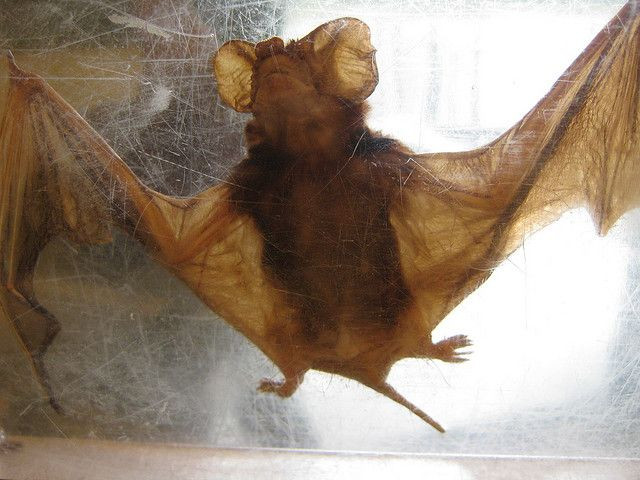Saudi Arabian Bat May Be Source Of MERS: Scientists Establish 100% Genetic Match In Tomb Bat Specimen

Saudi Arabian bats could be the animal origin of the mystery infection Middle East respiratory syndrome (MERS), researchers conclude after establishing a 100 percent genetic match. The discovery was made by scientists conducting the first investigation into infectious animal reservoirs in Saudi Arabia, where the majority of human cases have been reported. The genetic match represents a significant step toward containing the disease that has so far killed 47 of the 100 people it has infected worldwide.
"There have been several reports of finding MERS-like viruses in animals. None were a genetic match. In this case we have a virus in an animal that is identical in sequence to the virus found in the first human case. Importantly, it's coming from the vicinity of that first case," said W. Ian Lipkin, M.D., speaking to e! Science News. Lipkin is the director of the Center for Infection and Immunity and the co-author of a study slated for publication in Emerging Infectious Diseases.
The New York Times reports that the bat is a Taphozous perforatus, an Egyptian tomb bat found in derelict buildings and abandoned spaces. Dr. Jonathan H. Epstein, a veterinarian with the EcoHealth Alliance who partook in the investigation, theorized that the first victims may have sought shelter in such areas and unwittingly inhaled dried bat droppings. However, it is also possible that the bat itself picked up the virus in a similar way.
"There is no evidence of direct exposure to bats in the majority of human cases of MERS," said lead author Ziad Memish, M.D., deputy minister of health for the Kingdom of Saudi Arabia. "Given that human-to-human transmission is inefficient, we speculate that an as-yet-to-be determined intermediate host plays a critical role in human disease."
To explore the possibility of an intermediate or ancillary host, further investigation is necessary. The researchers are currently performing genetic testing on camels, sheep, goats, and a cow. According to Lipkin, “huge amounts” of work remains.
“We are continuing to look for evidence of the virus in wildlife and domestic animals, and investigating the mechanisms by which the virus causes human disease," he explained. "This is but the first chapter in a powerful collaboration amongst partners committed to global public health.”
According to the Centers for Disease Control and Prevention, MERS is caused by a coronavirus called MERS-CoV, and has so far killed half of its victims. The first case was reported in Saudi Arabia in 2012. To date, all reported cases have been linked to countries near the Arabian Peninsula.
Published by Medicaldaily.com



























